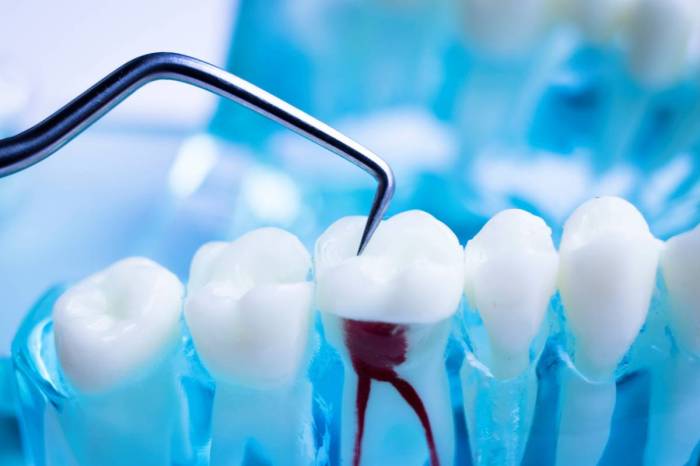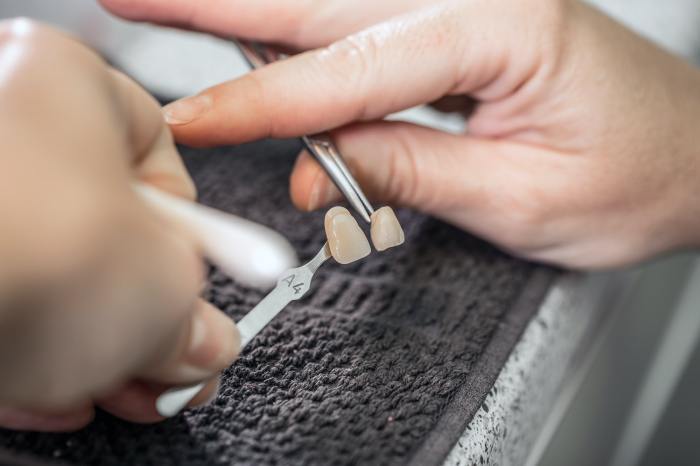How long does it take to do a filling? This discussion provides a comprehensive overview of the factors influencing the duration of a dental filling procedure, from the preparation of the tooth to the placement and finishing of the filling material.
Understanding the procedure’s steps, the various filling materials, and patient considerations can help manage expectations and ensure a positive experience. Different factors can influence the procedure’s duration, including the complexity of the cavity, the dentist’s experience, and the patient’s cooperation.
Types of Fillings
Choosing the right dental filling material is crucial for restoring a tooth’s function and appearance. Different materials offer varying degrees of durability, longevity, and cost. Understanding the characteristics of each type is essential for making informed decisions with your dentist.
Common Dental Filling Materials
Dental fillings come in a variety of materials, each with its own set of pros and cons. The most prevalent choices include amalgam, composite resin, and gold. These materials vary significantly in their composition and properties, influencing their suitability for different situations.
Amalgam Fillings
Amalgam fillings, often referred to as “silver fillings,” are a combination of mercury and other metals, primarily silver, tin, and copper. This alloy offers excellent durability and longevity, making it a cost-effective option. Its strength and resistance to wear make it suitable for posterior teeth, where chewing forces are greater. However, concerns regarding mercury’s potential health effects have led to a decline in its usage in favor of other materials in some regions.
Composite Resin Fillings
Composite resin fillings are a tooth-colored material made from a mixture of organic and inorganic components. These fillings are highly esthetic, closely matching the natural tooth color, making them a popular choice for anterior teeth. They are also relatively easy to manipulate and place, which allows for more precise shaping. However, their durability and longevity may be slightly less than amalgam fillings, and they can be more susceptible to staining and chipping.
Gold Fillings
Gold fillings are a durable and corrosion-resistant option, often chosen for their longevity and ability to withstand significant chewing forces. Their high cost, however, makes them a less common choice. Gold is a biocompatible material that doesn’t react with the surrounding tissues, and its exceptional strength and resistance to wear contribute to the longevity of the restoration. The significant aesthetic disadvantage is that gold fillings have a noticeable metallic appearance.
Comparison of Filling Materials
| Material | Durability | Cost | Esthetics | Environmental Impact |
|---|---|---|---|---|
| Amalgam | High | Low | Poor | Concerns about mercury |
| Composite | Moderate | Moderate | Good | Generally low, but some materials may contain Bisphenol A (BPA) |
| Gold | Very High | High | Poor | Low, generally considered environmentally friendly |
Factors Affecting Filling Time

Getting a dental filling can be a relatively straightforward procedure, but various factors can influence how long it takes. Understanding these elements can help patients anticipate the appointment duration and feel more at ease during the process. From the complexity of the cavity to the dentist’s experience, several aspects contribute to the overall time required.Dental fillings, while often perceived as a quick fix, can vary significantly in duration depending on the specific circumstances.
The procedure’s length is affected by numerous interconnected elements, impacting the patient’s comfort and the dentist’s ability to perform the procedure efficiently and effectively.
Cavity Size and Shape Complexity, How long does it take to do a filling
The size and shape of the cavity play a crucial role in determining the filling time. A small, uncomplicated cavity can be filled relatively quickly, requiring less material and fewer steps. Conversely, a large, complex cavity with multiple crevices or deep fissures necessitates more time for thorough preparation and filling. This complexity also influences the number of steps needed to isolate and access the cavity effectively, and to ensure the filling material adequately seals the cavity, preventing future problems.
For instance, a cavity located on a heavily-contoured surface of a tooth requires careful access and preparation, increasing the procedure time compared to a simple, straightforward cavity.
Dentist and Assistant Experience
The experience level of the dentist and their assistant significantly impacts the filling procedure’s efficiency. Experienced professionals have honed their skills, leading to quicker and more precise procedures. They are more adept at handling various cavity types and using dental tools efficiently, reducing the time spent on each step. Likewise, experienced assistants contribute to the smooth workflow, supporting the dentist and ensuring a seamless procedure.
This experience allows them to anticipate potential challenges and manage them effectively, minimizing delays.
Availability of Dental Tools and Equipment
The availability of necessary tools and equipment directly influences the filling time. A well-equipped dental office with readily accessible tools and instruments, such as high-quality drills, dental burs, and various filling materials, can streamline the procedure, reducing downtime. Having a sufficient supply of these tools avoids unnecessary delays, ensuring the dentist can work efficiently and without interruptions. For instance, a dental office without the correct size of bur to access the cavity would significantly delay the procedure.
Patient Cooperation
Patient cooperation is essential for a smooth and efficient filling procedure. A patient who remains still and follows the dentist’s instructions reduces the time needed for the procedure. Conversely, a patient who fidgets or moves during the procedure can cause delays, impacting the dentist’s ability to work effectively. This also affects the accuracy of the procedure, potentially increasing the risk of complications.
For example, a patient who is anxious or uncomfortable may make it difficult to complete the procedure, adding to the time required.
Filling Material Type
Different filling materials have varying application times. Some materials require longer setting times, influencing the procedure’s duration. The dentist must consider the material’s properties and application technique, and this directly affects the time required to complete the procedure. For instance, composite resin fillings often require multiple layers and curing steps, which can extend the overall procedure time compared to amalgam fillings, which have a quicker setting time.
Dental Office Workflow
The dental office’s workflow also affects the filling time. A well-organized workflow, with clear procedures and efficient communication between the dentist and assistant, minimizes delays and maximizes the efficiency of the procedure. A streamlined workflow reduces the waiting time between steps, contributing to a shorter overall procedure time. For example, a well-organized office with a pre-scheduled appointment sequence ensures a smooth transition between patients, minimizing idle time and maximizing the use of available time.
Procedure Steps for Filling
Getting a dental filling is a common and relatively straightforward procedure. It involves restoring a decayed or damaged tooth to its former function and aesthetic appeal. The steps are carefully orchestrated to ensure the patient’s comfort and the longevity of the restoration. Understanding the procedure helps alleviate any anxieties associated with the treatment.
Preparing the Tooth
The initial phase focuses on preparing the affected tooth for the filling material. This crucial step involves removing the decay completely, ensuring no remnants hinder proper filling placement. Using specialized instruments, the dentist carefully removes the decayed portion, shaping the cavity to accept the filling material. The goal is a clean, smooth cavity that conforms perfectly to the filling material.
This meticulous preparation prevents future decay and ensures the filling’s durability.
Placing the Filling Material
Once the tooth is prepared, the filling material is carefully placed within the cavity. The dentist meticulously shapes the material to precisely fill the cavity, ensuring a tight seal against the surrounding tooth structure. This precise placement is essential for preventing leakage and subsequent complications. Different types of filling materials have unique application techniques, demanding careful adherence to manufacturer instructions.
Shaping and Polishing the Filling
Following the placement, the filling needs shaping and polishing. This process involves adjusting the filling’s contours to blend seamlessly with the natural tooth structure. The dentist employs specialized instruments to sculpt the filling, creating a smooth and even surface. Polishing the filling is crucial for aesthetics and oral health, removing any rough edges that could irritate the soft tissues of the mouth.
A properly shaped and polished filling minimizes the risk of discomfort and ensures a comfortable bite.
Importance of Isolation
Proper isolation is paramount throughout the filling procedure. This technique prevents saliva, food particles, and other foreign matter from entering the cavity during treatment. Dry fields are essential for clear visibility and efficient work. This method ensures the filling material sets correctly, contributing to the filling’s longevity. Using a dental dam, the dentist creates a sterile environment for work, minimizing the risk of infection.
Post-Procedure Care
Following the filling procedure, patients should follow specific aftercare instructions to ensure proper healing and long-term success. This includes avoiding hard foods, maintaining good oral hygiene, and attending follow-up appointments as advised. Understanding these instructions helps patients achieve the best possible outcomes and maintain the longevity of their filling. Adherence to post-procedure guidelines is essential for preventing complications.
Step-by-Step Procedure Table
| Step | Description | Image Description |
|---|---|---|
| 1 | Decay Removal: The dentist meticulously removes the decayed portion of the tooth using specialized instruments. | A close-up view of a dentist using a dental drill to remove decayed tooth material. The surrounding tooth structure is visible, and the cavity is clearly defined. |
| 2 | Cavity Preparation: The dentist shapes the cavity to precisely fit the filling material, ensuring a snug and complete seal. Any remaining debris is removed. | The dentist is preparing the cavity using dental instruments. The cavity is meticulously shaped to accommodate the filling. |
| 3 | Filling Material Placement: The chosen filling material is carefully inserted into the prepared cavity. The dentist precisely adjusts the material to fill the cavity completely. | The dentist is placing the filling material into the cavity. The material is being shaped and molded to conform to the cavity’s contours. |
| 4 | Shaping and Smoothing: The dentist shapes the filling to match the surrounding tooth structure, ensuring a seamless transition. Any rough edges are smoothed out. | The dentist is using tools to smooth and shape the filling material to blend with the natural tooth. |
| 5 | Polishing and Finishing: The dentist polishes the filling, creating a smooth surface that is comfortable and resistant to food impaction. | The dentist is polishing the filling using a specialized tool. The surface is smooth and even, and there are no rough edges. |
| 6 | Isolation and Protection: A dental dam is placed to isolate the area, keeping the cavity clean and preventing contamination. | A dental dam is shown covering the prepared tooth area, separating it from the rest of the mouth. |
| 7 | Post-Procedure Instructions: The dentist provides instructions on aftercare, including dietary recommendations and follow-up appointments. | The dentist is explaining post-procedure instructions to the patient, emphasizing the importance of proper oral hygiene and dietary restrictions. |
Average Time Ranges

The time required for a dental filling varies significantly depending on factors like the type of filling material, the complexity of the cavity, and the dentist’s experience. While a simple filling might take just a few minutes, more intricate procedures can extend the appointment considerably. Understanding these timeframes can help patients manage their expectations and plan their schedules.
Influence of Filling Type on Time
Different filling materials require varying levels of manipulation and curing time. Amalgam fillings, for instance, often involve more steps in the preparation phase, which can impact the total time taken. Composite fillings, on the other hand, are known for their versatility and faster application times. The complexity of the tooth’s anatomy and the extent of decay also play a critical role.
Dentist Specialization and Experience
A highly experienced dentist, particularly one specializing in restorative dentistry, will likely have refined techniques and a better understanding of cavity preparation and material application. This specialization often leads to a more efficient workflow, resulting in potentially shorter filling times, especially for intricate cases. A general dentist, while equally skilled, might require slightly more time for complex procedures.
Comparison Across Dental Practices
Average filling times can differ slightly between dental practices. Factors like the practice’s workflow, the average case complexity, and the equipment used contribute to these variations. Practices that emphasize preventative care, leading to fewer complex cases, might report shorter average filling times than those with a higher volume of extensive restorations. Ultimately, the individual dentist’s expertise and experience within a practice remain key elements influencing the duration.
Chart of Average Filling Times
| Filling Type | Average Time (min) | Complexity |
|---|---|---|
| Simple Amalgam | 20-30 | Low: Small cavities, straightforward preparation |
| Complex Amalgam | 45-60 | Medium: Larger cavities, multiple procedures, possible tooth preparation |
| Simple Composite | 15-25 | Low: Small cavities, straightforward preparation |
| Complex Composite | 30-45 | Medium: Larger cavities, more complex layering and shaping |
| Ceramic Inlays/Onlays | 60-90 | High: Requires more precise preparation, laboratory work, and fitting |
Note: These are estimated averages. Actual filling times may vary based on individual patient needs and specific circumstances.
Variations in Practice: How Long Does It Take To Do A Filling
Dental practices, while sharing fundamental procedures, often exhibit noticeable differences in their approach to fillings. These variations stem from several factors, including the specific training and experience levels of the dental professionals, the type of equipment utilized, and the overall standards of care implemented within each practice. Understanding these nuances can help patients make informed decisions about their dental care.Different practices have varying protocols and preferences, which naturally impact the time required for a filling procedure.
Factors such as the complexity of the cavity, the patient’s unique oral anatomy, and the specific materials employed all contribute to the variability in filling times. A comprehensive understanding of these elements can ease patient anxieties and help them anticipate the duration of their appointment.
Potential Differences in Filling Procedures
Variations in filling procedures arise from the diverse training and experience levels of dentists and dental staff. Some practices might prioritize meticulous, step-by-step procedures, potentially leading to longer appointment times but potentially higher quality outcomes. Other practices might focus on efficiency, aiming for faster procedures, but possibly at the expense of comprehensive detail. The level of experience of the dental hygienist or assistant also plays a significant role.
Experienced staff can often streamline procedures and reduce the overall time needed.
Varying Standards of Care and Equipment
Dental practices adhere to varying standards of care. The equipment utilized in each office also influences the duration of a filling. Practices equipped with advanced tools, such as high-speed drills with precise controls, or specialized imaging technology, may facilitate faster and more precise procedures. The availability of advanced materials also plays a role. Modern composite resins, for instance, often require specific application techniques, which may influence the overall procedure time.
Experience Levels of Dentists and Staff
The experience level of the dentist and supporting staff significantly affects the filling time. Experienced dentists are often more adept at identifying and addressing potential complications during a procedure. Their proficiency may allow for quicker, more efficient treatment. Similarly, trained and experienced dental assistants and hygienists can streamline the procedure by effectively preparing the patient and the area.
Factors Affecting Filling Time
Numerous factors influence the time taken for a filling. Cavity size and location are crucial. A small, uncomplicated cavity will typically take less time to fill than a large, complex cavity that requires more extensive preparation. The patient’s comfort level and cooperation also affect the duration. A patient who experiences discomfort or anxiety might necessitate a slower pace, increasing the procedure time.
The complexity of the tooth’s structure and the surrounding tissues also plays a role. A tooth with intricate root canals or a more complex anatomy could lead to longer procedure times.
Reasons for Longer-Than-Average Filling Times
Longer-than-average filling times can stem from various factors. Unexpected complications, such as encountering a more complex root structure than anticipated, can necessitate additional time. A patient’s unique oral anatomy might require more time for meticulous preparation, potentially impacting the procedure’s duration. The need for multiple appointments, for example, to address a particularly challenging cavity, can significantly extend the overall time commitment.
Patient Considerations
A successful dental filling relies not just on the dentist’s skill, but also on the patient’s cooperation and understanding. A calm, cooperative patient allows for a smoother procedure, leading to a better outcome and a more comfortable experience. Understanding patient anxieties and expectations is key to managing the process effectively.Patient preparation and communication play a vital role in ensuring a positive filling experience.
Clear communication about the procedure, including potential sensations and expected duration, helps manage patient anxiety and promotes a more collaborative approach.
Importance of Patient Communication and Preparation
Effective communication between the dentist and patient is paramount. The dentist should explain the procedure clearly, addressing any concerns or questions the patient might have. This includes outlining the steps involved, potential sensations, and expected duration. Pre-procedure discussions can significantly reduce anxiety. Providing clear instructions for pre-operative preparation, such as fasting guidelines if necessary, ensures a smooth and efficient process.
A relaxed patient is more likely to cooperate effectively.
Impact of Patient Anxiety on the Filling Procedure
Dental anxiety can significantly affect a patient’s ability to cooperate during a filling procedure. Fear and anxiety can manifest physically as muscle tension, which can make the procedure more challenging for both the patient and the dentist. This can also lead to discomfort and potentially impede the dentist’s ability to perform the procedure with precision. Addressing patient anxieties through empathetic communication and relaxation techniques can significantly improve the overall experience.
For instance, a dentist might use calming music or distraction techniques to help ease anxiety.
Factors Influencing Patient Cooperation
A patient’s ability to cooperate during a filling procedure is influenced by various factors. These include the patient’s overall health, any existing medical conditions, and their comfort level with dental procedures. A patient’s past experiences with dental work, their understanding of the procedure, and their level of trust in the dentist also play a crucial role. Patients with a history of dental anxiety might require additional support, such as pre-procedure relaxation exercises or sedative options.
Questions Patients Should Ask Their Dentist
Patients should feel empowered to ask questions about the filling procedure. This empowers them and builds trust in the process. Crucially, patients should inquire about the specific type of filling material to be used, its longevity, and potential risks or side effects. Understanding the expected discomfort level and any post-operative care instructions is also vital. Questions about alternative treatment options, if applicable, are also beneficial.
Potential Impacts of Dental Insurance on Filling Procedures
Dental insurance policies can influence the filling procedure in several ways. Different plans have varying coverage amounts and may require pre-authorizations or referrals for certain procedures. Patients should carefully review their insurance plan details to understand the coverage for fillings and any associated costs. This can help patients to manage their financial responsibilities related to the procedure.
The choice of filling material may also be influenced by insurance coverage, as some materials might be covered more extensively than others.
Last Word
In conclusion, the time required for a dental filling is not a fixed number but rather a range influenced by various factors. Understanding these elements, from the type of filling to the dentist’s expertise, can help patients prepare for their appointment and have realistic expectations regarding the procedure’s duration. Remember, open communication with your dentist is key to a smooth and efficient experience.
Common Queries
What are the common dental filling materials?
Common filling materials include amalgam, composite resin, and gold. Each material has distinct properties regarding durability, cost, and esthetics.
How does the complexity of the cavity affect filling time?
More complex cavities, with intricate shapes or larger areas, generally require more time for preparation and filling placement.
What role does the dentist’s experience play in filling time?
Experienced dentists often perform procedures more efficiently, which can contribute to a shorter filling time.
Can patient anxiety affect the filling procedure?
Yes, patient anxiety can sometimes lead to increased procedure time due to discomfort or difficulties in cooperation.
 Nimila
Nimila



